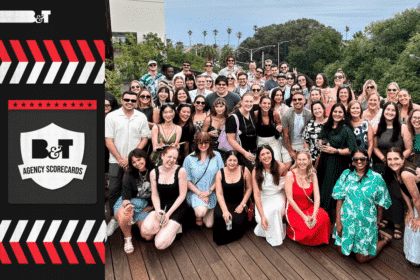We talk so often of the global village and how the world is getting smaller, yet in our rush to conquer the world, Australian brands have for the most part neglected our own back yard.
The same is true for international brands whom you could be forgiven for thinking only have eyes for Australians living in the nation’s capitals.
In the latest issue of B&T Magazine (FYI out now – contact us for your copy), we set out to explore this very topic.
We partnered with Boomtown, the latest industry collective representing 8.8m people living in regional Australia, one of the largest and fastest growing markets for brands to tap into. It’s time for marketers and savvy business executives to rethink regional advertising and discover why this is a market where your brand will boom.
Ironically, it’s the very same connectivity that so quickly turned the world into a village that has also finally brought regional Australia in from the cold.
Australia isn’t about empty fields and slack-jawed country bumpkins who, as soon as they can, get the heck out of dodge. Instead, connectivity means people in regional Australia have the best of both worlds.
All the mod cons of city life, but without the traffic, cost of living or stress. In other words, regional Australia is a boom town. A boom town waiting for your brand to start reaping the benefits.
Mercifully, some of Australia’s leading media outlets have thrown down the gauntlet and said enough! Forming the collective Boomtown, Southern Cross Austereo, News Corp Australia, Win, Prime Media Group, Australian Community Media, Imparja and TRSN have joined together to shine a light on the benefits of advertising in regional Australia – to rethink regional advertising.
With a lower cost of living due to cheaper housing, the people of Boomtown have both time and disposable income.
Yet only 10 per cent of national media budgets are spent regionally, despite 36 per cent of the country’s population living there. So, your brand could reach an extra 8.8 million Aussies by advertising in Boomtown’s uncluttered environment.
In other words, Boomtown means business.
Brian Gallagher, chair of the Boomtown committee and Southern Cross Austereo’s chief sales officer said,
“Many brands are under-invested in regional markets and there are substantial growth opportunities. Quick service restaurants, retailers and the automotive sectors have understood that for a long time.
“They don’t need big data to tell them because they see it at the cash register. As media companies, we are all acutely aware of the investment imbalance between regional and metropolitan markets.
“For those of us who run regional media companies, the investment from national advertisers is an anomaly and we feel that together.”
“Regional consumers want inspiration, information and entertainment from sources they know and trust.”
Consider some of the below facts. Five out of the 10 online shopping postcodes in Australia are in Boomtown. That’s right, regional areas are not only competing with their city counter parts, they’re out performing them when it comes to shopping online.
And when you look at the truth, it’s actually little wonder. Research conducted by Nielsen found the average household income of Boomtown residents aged 25-54 is $93,000, which is similar to their metropolitan counterparts. Combined with a lower cost of living, that gives Boomtown residents more cash to splash.
Due to lower housing costs, Boomtown residents have higher discretionary incomes. So, it’s no surprise that business is booming in regional Australia.
Again, Nielsen research demonstrates Boomtown residents spend more on their weekly grocery shop than their metro counterparts. This is the prime market all FMCG brands should be targeting.
Last week the Boomtown collective announced a massive trade marketing competition, offering $1 million in regional advertising to one national agency or brand in Australia. Click here for more details. Entries close 9th September.








